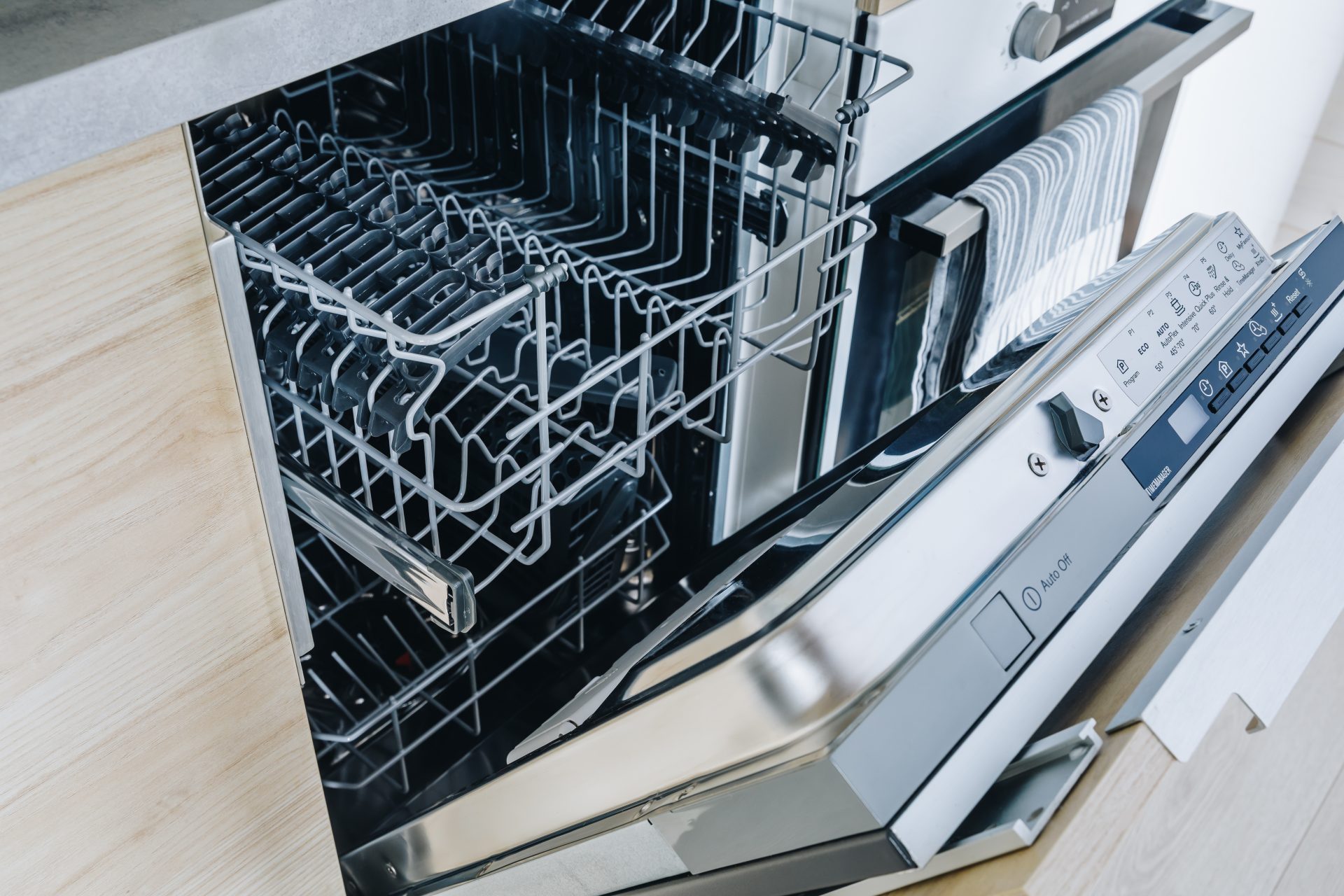
What To Do When Your Dishwasher Does Not Drain
Starting your day with a frothy puddle forming at the bottom of the dishwasher? There are many reasons why your dishwasher might not be draining properly; the bad news is you might have to get your hands dirty! Before calling in the pros, be sure to check out these troubleshooting steps.
Consider Your Habits
Yes, there is a right and wrong way to load a dishwasher! Loading your machine incorrectly can easily result in drainage issues, leaks, and dirty (or even broken) dishes. Be sure to consult the manufacturers’ instructions or owner’s manual for directions on how best to load your dishwasher.
Check The Cycle
Ensure that your dishwasher hasn’t shut off mid-cycle. You may notice standing water at the bottom of your dishwasher’s interior when the cycle has been interrupted or the dishwasher door has not been properly closed and latched. If you find this to be true, try fully closing your unit and running it a second time.
Examine Your Disposal
Since the drain hose from your dishwasher empties into the garbage disposal drain, your dishwasher will not react well to unprocessed food remnants or sediment. Luckily, this is usually an easy fix. Simply run your disposal to get your dishwasher draining properly again. In fact, even if you don’t have anything to dispose of, get in the habit of turning on the faucet and running your garbage disposal for several seconds every few days to prevent any future clogs.
Remove Standing Water
If the garbage disposal doesn’t appear to be the issue (or you don’t have a garbage disposal in your home), it’s time to roll up your sleeves and get a closer look at the state of your dishwasher.
Line the floor around and underneath the machine with towels. Then, use a measuring cup, ladle, and/or spoon to remove the standing water. Once the water is too shallow to scoop, dry the area with cloth or paper towels.
Beware Of Blockages
Once the standing water has been cleared away, it should be much easier to examine your machine’s drain basket, which can be found at the bottom of your dishwasher’s interior. Your drain basket will typically snap into place or be secured by one or two screws. If your machine doesn’t match this description, be sure to consult your owner’s manual for further instruction. You can often download the owner’s manual online from the manufacturer’s website.
After locating the drain basket, remove its cover and check for build-up in the underlying area. Then, use your hand or a utensil to remove any debris before replacing the cover and running the dishwashing cycle again.
If food debris frequently collects in your drain basket, consider preventing future blockages by pre-rinsing your dishes. Even if your machine insists that this isn’t required, it’s never a bad idea!
Clean Your Filter
So many homeowners don’t realize that dishwasher filters require a bit of maintenance to keep them in tip-top shape.
If you run at least one load of dishes every day, we recommend cleaning your dishwasher’s filter (in addition to the drain basket) a minimum of once a month. Much like your drain basket, if your dishwasher filter is clogged, it’s likely to prevent water from properly draining with each cycle.
Filters are often located in the back corner of your dishwasher’s interior or near the base of the bottom spray arm, but consult your owner’s manual to find the filter location on your unit, as well as directions for how and when to clean it.
Clear The Drain Hose
If you’re still searching for the drainage culprit, check the drain hose that connects the sink to your garbage disposal. Do your best to straighten any kinks in the hose, and blow through it or use a wire hanger to ensure it’s completely unclogged. While you’re there, make sure the seal is attached tightly.
Listen To Your Machine
If all else fails, your dishwasher might be able to tell you what it needs in order to drain! Take a listen to your dishwasher while it’s running a cycle; if its usual sounds are replaced by an unfamiliar hum or clicking noise, it might be time to replace the drain pump and motor.
If this occurs (or if you’ve tried the above steps and your dishwasher is still not draining), we are here for you! Contact CanWest Mechanical for all your routine and emergency plumbing needs.



No Comments